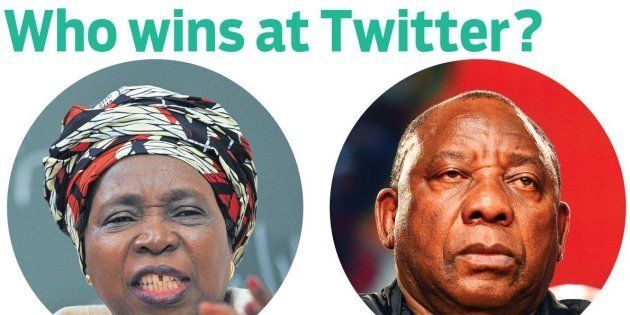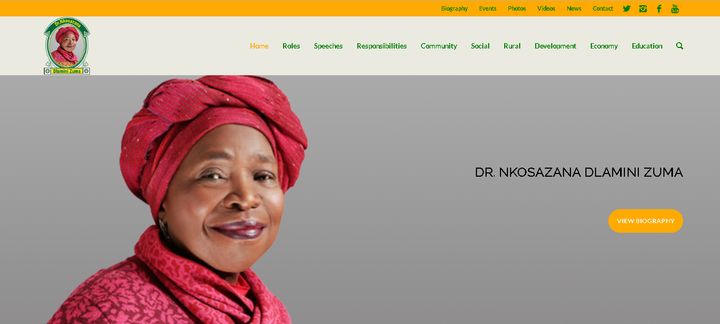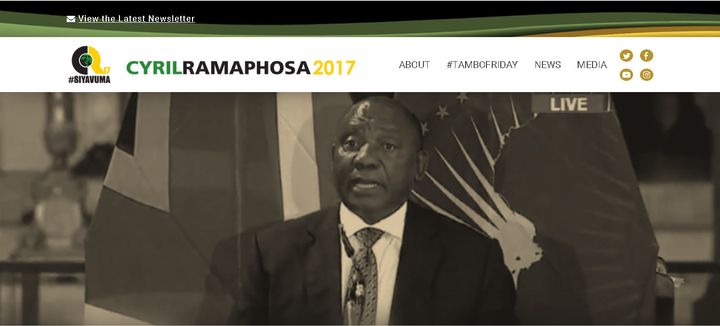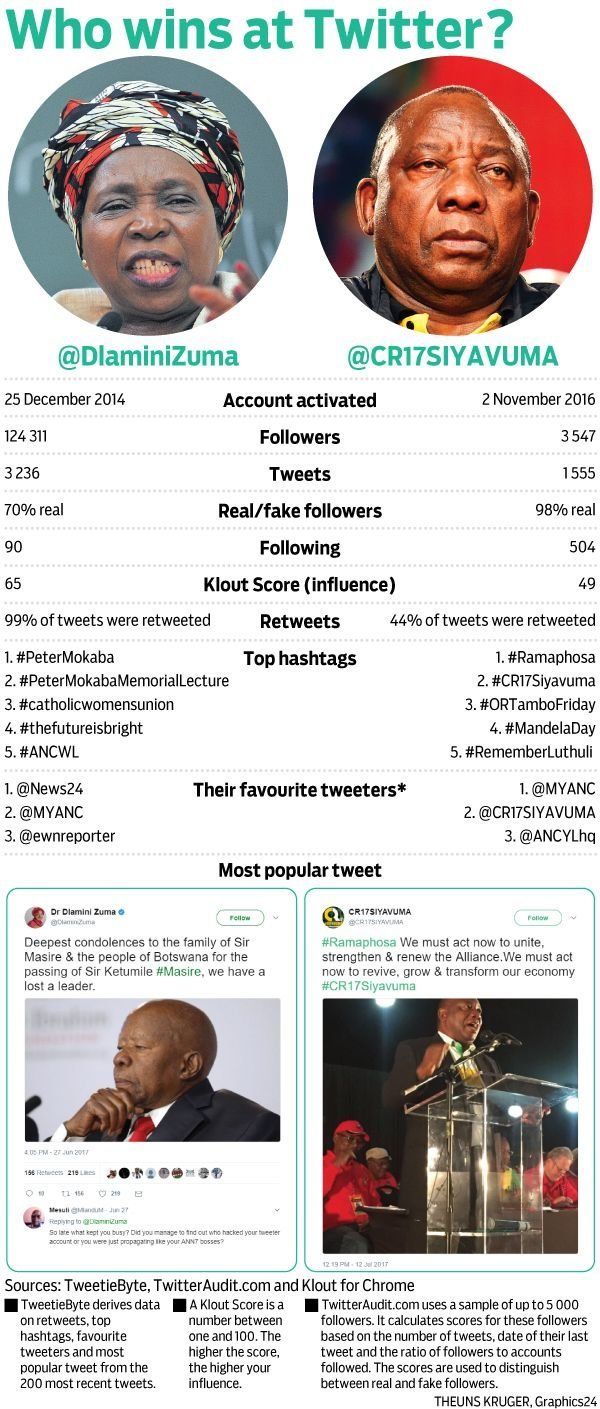
Campaign season in the ANC has looked decidedly different this year.
First, there was the months-early endorsement of Dr Nkosazana Dlamini-Zuma by the ANC Women's League.
"The Women's League did this just before the January 8 statement. I mean that was an incredible thing to do [considering ANC rules about the succession debate]... And to almost overshadow the ANC's biggest event of the year," says Stephen Grootes, host of the Midday Report on 702.
"[ANC secretary-general] Gwede Mantashe said something into my microphone that Sunday: 'I used to be a sprinter in my youth and there is something like a false start.'"
Then came the websites, newsletters, videos and social media updates.
- In our special report: Dlamini-Zuma's Dilemma. Cyril's Challenge. The ANC's Catch-22. Read it here.
How do the frontrunners compare?
- Nkosazana.com is a curious mix of bullet points and archive material. The first item on the "in the news" section dates back to 2002.

- The three dots in ANC colours that rotate while a page is loading is the first clue that Ramaphosa.org.zais no rush job. It looks good, is easy to navigate and the content is fresh.

- On Nkosazana.com, users can subscribe to a newsletter by only entering an email address, which is perhaps a strategy to increase the likelihood of subscription. It could also be a missed opportunity. When subscribing, the Ramaphosa campaign asks for basic details such as your province and whether you are an ANC member, which makes sense if you're building a campaign database. Then again, users might not want to part with their cell numbers, which is a required field.
- Team Ramaphosa has put out 12 newsletters, which are also available on its website. The newsletters typically feature a Ramaphosa speech from recent years, turned into an infographic. Topics have ranged from increasing "the scale and pace of radical economic transformation" to skills development. Some newsletters include book giveaways and links to posters of icons of the struggle such as lawyer and activist Victoria Mxenge, who was assassinated outside her home in 1985. (The Nkosazana.com newsletter is yet to arrive in my inbox.)
- Dlamini-Zuma had a reasonable head start on Twitter because she is using the account she has had since 2014 for her campaign (see graphic). Following a steady stream of tweets on her activities and speeches, her account was dead quiet for two weeks. Dlamini-Zuma's campaign tweeted again on August 7 to condemn violence against women. She commended the man who intervened when Deputy Minister Mduduzi Manana allegedly assaulted up to three women at a nightclub but did not mention the deputy minister or any of the women by name. City Press reported that one of the women, Mandisa Duma, was Dlamini-Zuma's niece. Dlamini-Zuma's account has been busy since the hiatus.

- The Ramaphosa campaign account is updated regularly. Aside from featuring Ramaphosa's activities and speeches, it pushes the newsletter and content on its website. Late on Monday, the account responded to an allegation made by EFF leader Julius Malema that Ramaphosa had abused his first wife.
Rumours about spousal abuse are the latest ploy in a dirty tricks campaign against CR17
— CR17SIYAVUMA (@CR17SIYAVUMA) August 14, 2017
- Team NDZ is more active on YouTube. It puts out videos of some of her speeches, broken up into smaller chunks. It also posted the first in a series of "In Conversation With" Dlamini-Zuma videos. (Considering that this was presumably aimed at a young audience -- the topic was youth development -- it was a very long 27 minutes.) Team Ramaphosa's channel until recently contained a mix of news clips and archive videos, featuring former ANC presidents Oliver Tambo and Nelson Mandela and former South African Communist Party leader Joe Slovo. This month, it introduced an animated explainer of the ANC document "Through the eye of a needle? Choosing the best cadres to lead transformation", and a video commemorating the 1987 mine workers' strike.
- The Ramaphosa campaign is considerably bigger on Facebook, with 112 241 followers versus 10 202 for Dlamini-Zuma. Both campaigns' activities on Facebook are largely information focused, as opposed to a focus on engagement with followers.
- Team Ramaphosa made its debut -- the first of 145 posts to date -- on Instagram on January 17. On the account, you'll find photos of a beaming Ramaphosa with a diverse mix of South Africans: young, old, able-bodied, people with disabilities, black and white. He is seen opening a clinic and attending religious gatherings. There is a summary of the findings of the Marikana commission and news about endorsements. There are also pictures of Ramaphosa with key players in the ANC leadership race. They include former ANC chairperson in KwaZulu-Natal Senzo Mchunu, ANC treasurer-general Zweli Mkhize, Eastern Cape chairperson Phumulo Masualle and his counterpart from Gauteng, Paul Mashatile -- who first seemed to endorse Ramaphosa but subsequently told City Press he might be a candidate for the top job himself. The account has 1 306 followers.
- Dlamini-Zuma's account has only posted 16 times. Among the first pictures shared was of her arrival in South Africa after leaving the African Union Commission. There is her visiting Wits and Rhodes universities, covered in a blanket (there is no caption), with Comrades winner Bongumusa Mthembu and celebrating Women's Day in Kimberley. She has 722 followers.
All in all, the Ramaphosa campaign has a better website. Dlamini-Zuma's total following on Twitter, Facebook and Instagram is bigger than that of the Ramaphosa campaign. However, if the proportion of Dlamini-Zuma's fake followers on Twitter is taken into account (30 percent according to TwitterAudit.com versus 2 percent for Ramaphosa) their total followers across the three social networks are neck and neck.
The race won't be decided online as only 40 percent of South Africans are internet users and ANC branches have the biggest say, but the battle is certainly no longer analogue.
